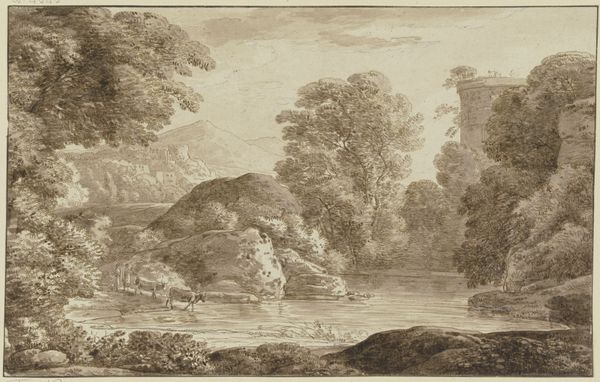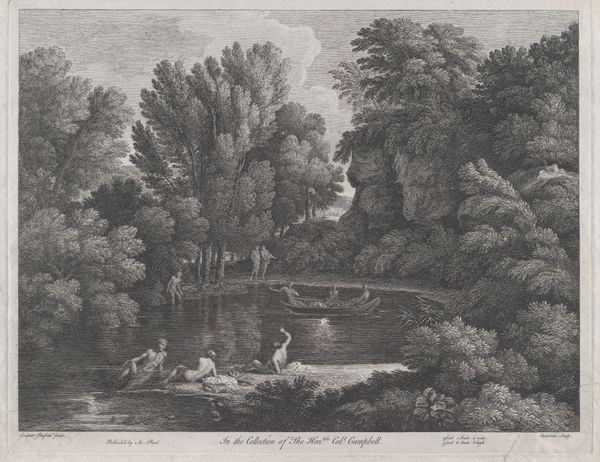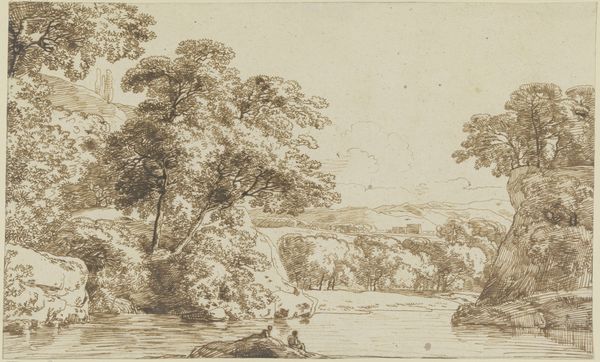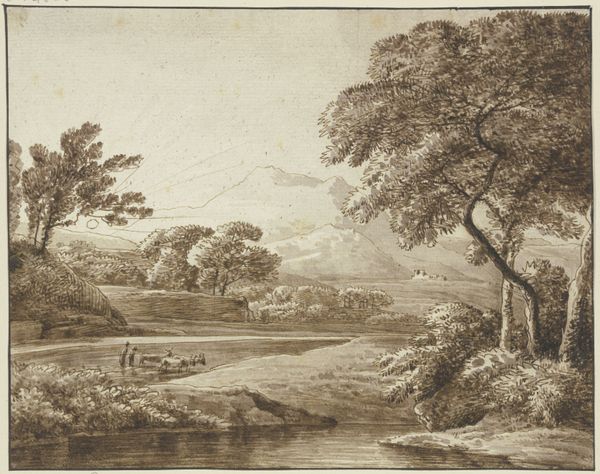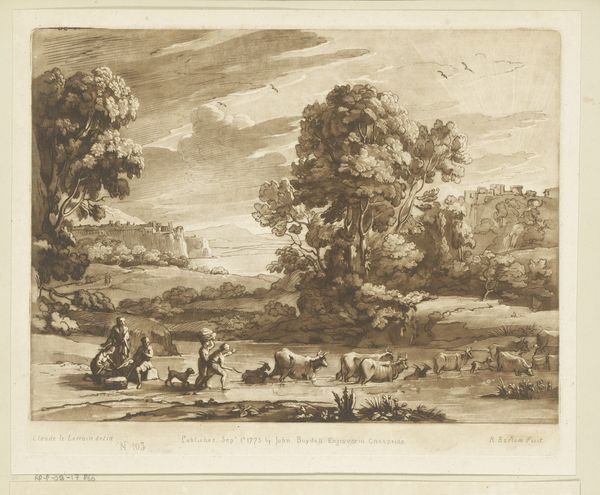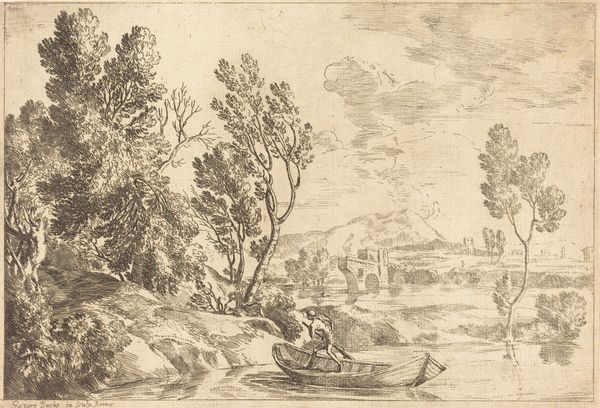
Baumpartie, vorne eine Schafherde, hinten an einem Zaun ein Wagen mit zwei Pferden
0:00
0:00
drawing, ink, pencil, graphite
#
drawing
#
baroque
#
landscape
#
charcoal drawing
#
ink
#
pencil drawing
#
pencil
#
graphite
Copyright: Public Domain
Curator: At the Städel Museum, we have "Baumpartie, vorne eine Schafherde, hinten an einem Zaun ein Wagen mit zwei Pferden," which translates to "Group of Trees, with a Flock of Sheep in Front, a Cart with Two Horses at a Fence in the Back." This landscape drawing is rendered with graphite, ink, and pencil, evoking the Baroque style. What is your immediate take? Editor: It's a very pastoral scene, tranquil almost. The subdued monochrome palette and soft lines create a gentle, almost dreamlike atmosphere. I see reflections in the water; what do they mirror? Curator: These landscapes are mirrors reflecting society's views, dreams, and values around land and ownership during a turbulent epoch. Observe how animals are not merely aesthetic choices, but potent symbols of harmony and innocence, reminding us of prelapsarian unity. Editor: Harmony maybe, but that harmony seems staged, doesn’t it? Look closely at the social hierarchy implied. The shepherd is separate from those riding or using the horse-drawn cart. A romantic view it is, but what is excluded? Curator: Your observation echoes an understanding of hierarchies, an understanding layered through symbols encoded across human interaction within visual space. The road with the cart may reflect progression towards future societal advancement but does that advancement also carry notions of hierarchy? Editor: Yes, of course. The very idea of "advancement" is loaded, signifying whose progress is prioritized and at what cost to the land and laborers. Those are real tangible costs to real human lives and nature that we have normalized through these very images of idyllic advancement. Curator: Landscapes can function like elaborate visual lexicons. The way figures interact can echo power structures or even anxieties surrounding land use and shifting economies. Editor: Indeed, while we enjoy the delicate artistry, it's crucial to critically examine what’s not immediately apparent: the unspoken narratives around labor, class, and the very human cost masked within such idyllic images of "pastoral" life. What narratives did not have the ability to enter in these types of landscape, which perspectives are missing from the vista before us. Curator: Ultimately, considering that the artist remains an enigma to us, let's appreciate these images as intricate cultural and societal maps, subtly revealing traces of encoded knowledge within the seemingly conventional scenes of their time. Editor: I appreciate you pointing out the encoded aspects of a vista like this—an important invitation to see them as complex archives rather than just pretty pictures. Thanks!
Comments
No comments
Be the first to comment and join the conversation on the ultimate creative platform.



